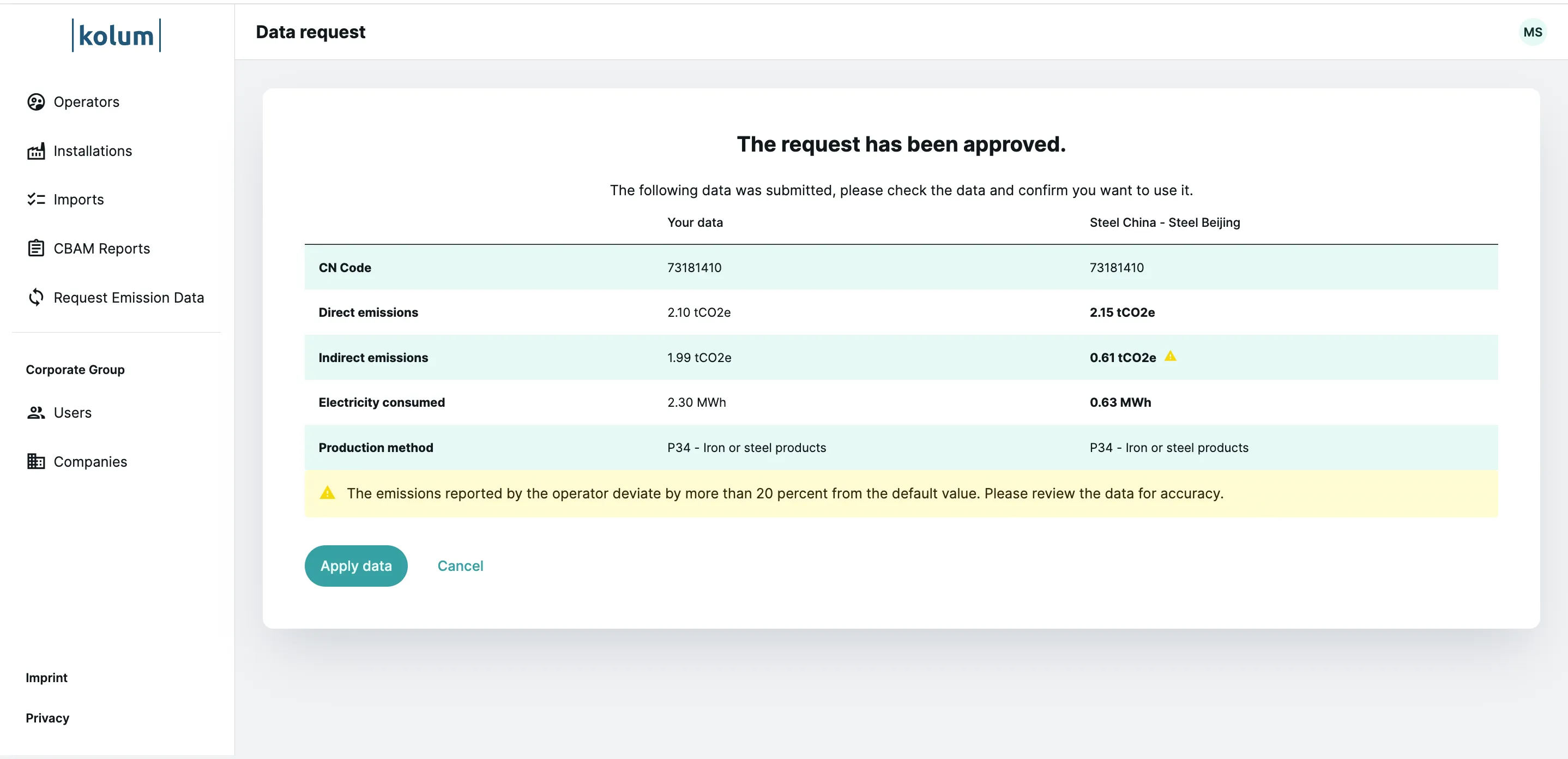6. Emission data
This page explains how to record actual emissions data for your imported goods. In general, there are two ways to record actual emissions data.
Option 1: Enter Existing Emissions Data
If you already have emissions data, for example, if your operator has already provided it to you, you can easily record it for the imported goods. Navigate to the “Request Emissions Data” page. There, you will see all your imported goods aggregated by the 8-digit CN Code and the respective installation.
To enter actual emissions data, click on the pencil icon in the respective row.
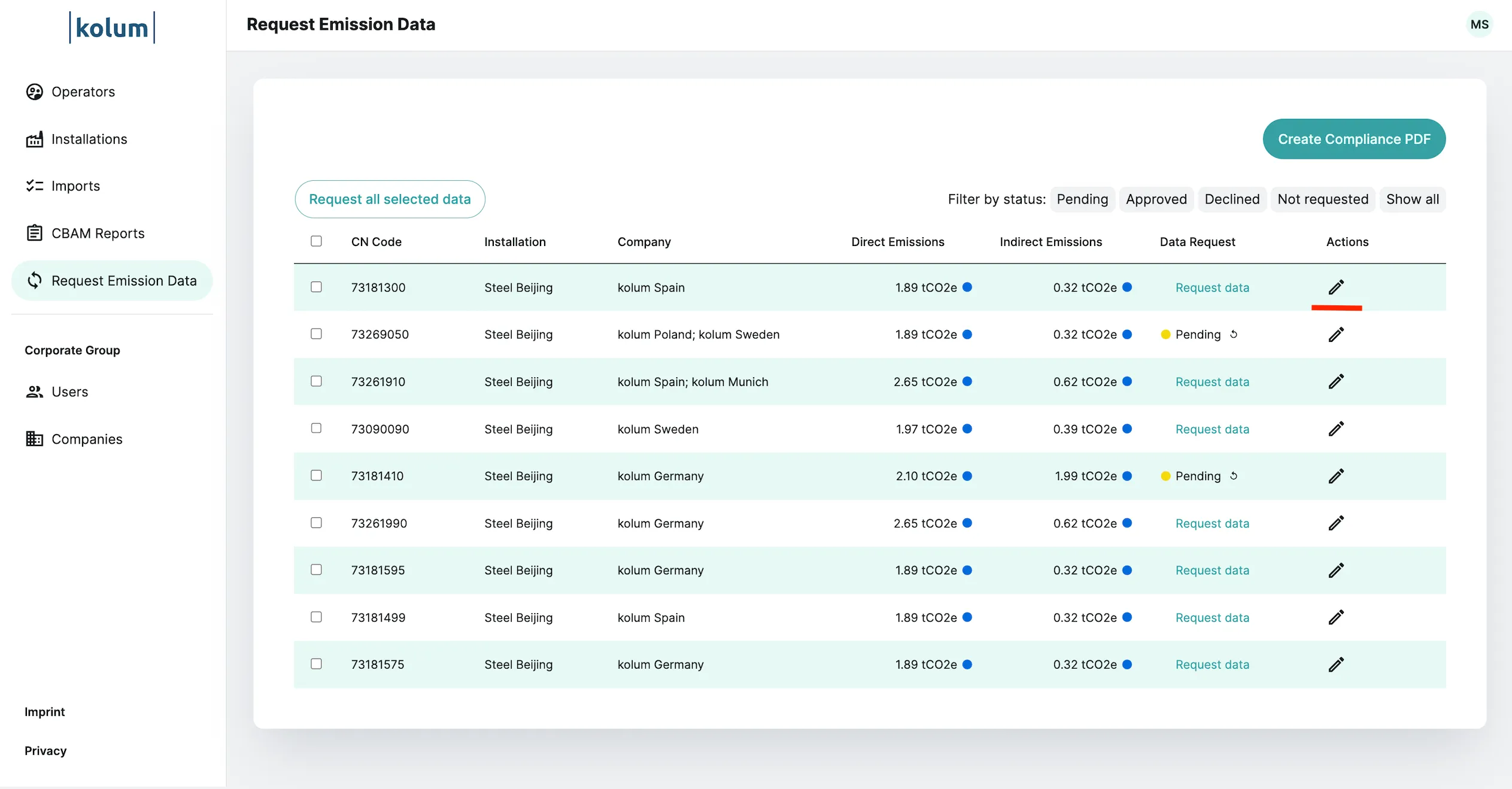
In the window that opens, you can now enter the required data points for the actual emissions:
- Direct Emissions: Enter the direct emissions that occur during the production of one unit of the good (e.g., 1 ton).
- Electricity Consumed: Enter the electricity consumed during the production of one unit of the good (e.g., 1 ton).
- Indirect Emissions: The software automatically calculates indirect emissions based on the consumed electricity and the emission factor for the power grid in the country of origin stored in the software.
- Production Method: Additionally, you must specify which production method was used in the production facility to produce the goods.
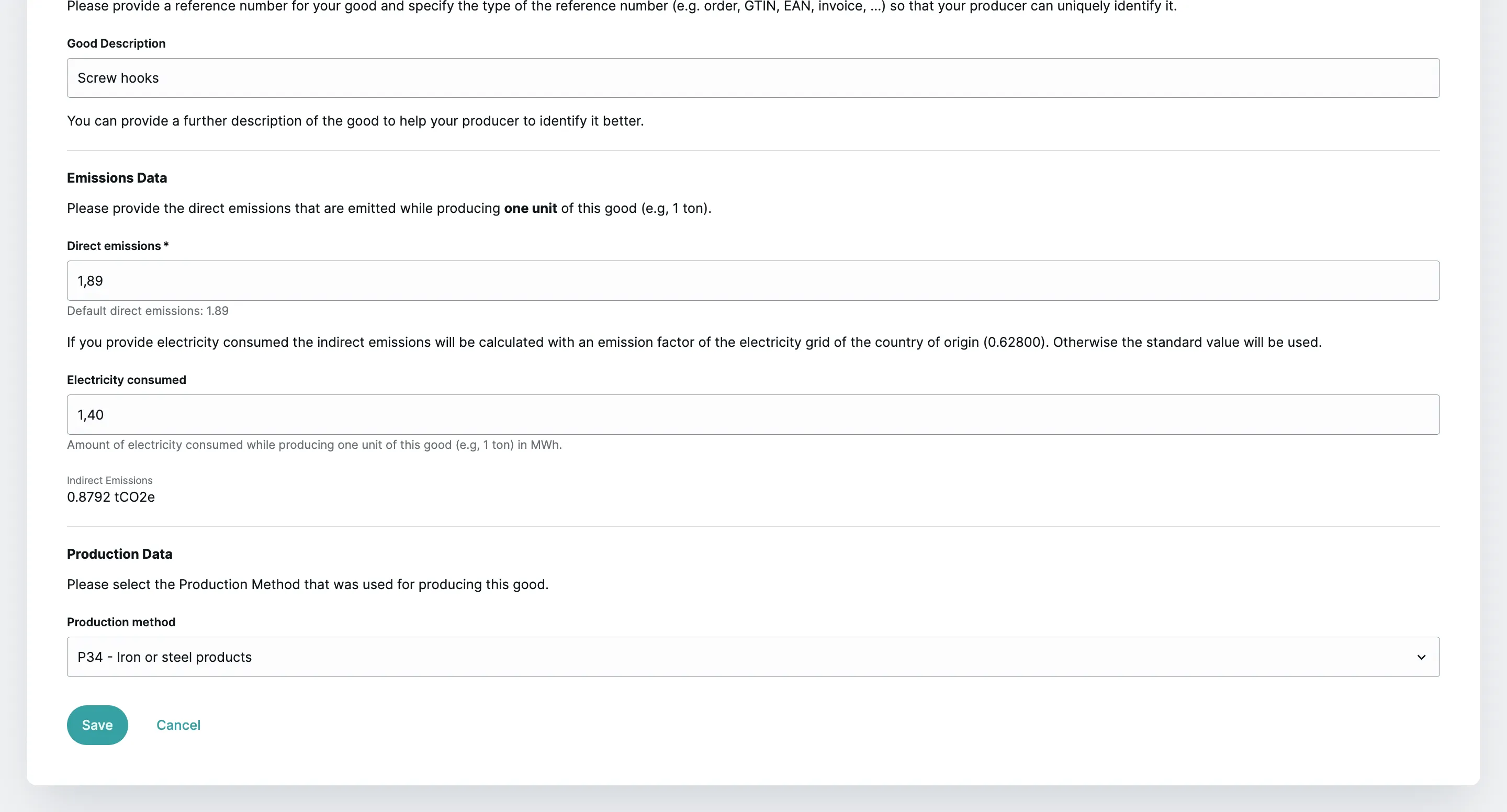
Option 2: Request Emissions Data from the Plant Operator
If you do not yet have actual emissions data from your operator, you can use the kolum software to request it directly and automatically through the software. If you have already specified a reference number for the goods during the import process, the “Request Data” button will be clickable, and you can send the data request. If no reference number has been specified for the good, the “Request Data” button will be blocked, and the request cannot be sent. In that case, you can click the “pencil icon” in the respective row and enter the reference number, the reference number type, and (optionally) the goods description. You can then send the request.
This mechanism encourages you to further describe/specify the goods for your Operator so that they can unambiguously identify the requested goods.
After clicking the “Request Data” button, the contact person you have on file for the operator will receive an invitation to the kolum software and can process the emissions data request on their side of the software and send the data back to you.
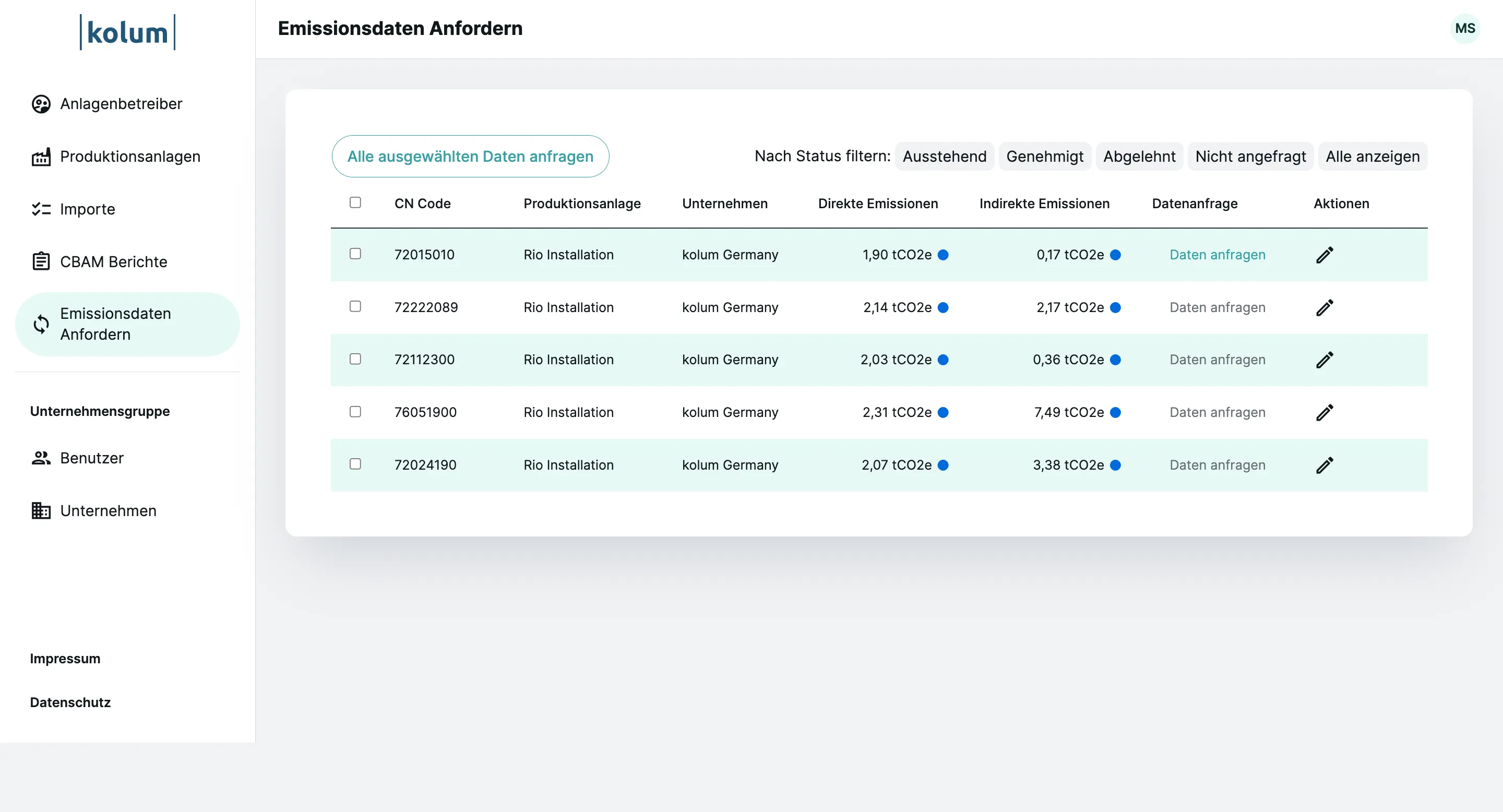
Send Bulk Requests
In addition to individual requests for specific goods, you can also automatically request all goods at once. To do this, click on the checkbox in the header row of the table, which will select all checkboxes simultaneously. Then click the “Request All Selected Data” button to send all the requests. Of course, you can also request multiple (but not all) goods by checking the corresponding checkbox in each row and then clicking “Request All Selected Data.”
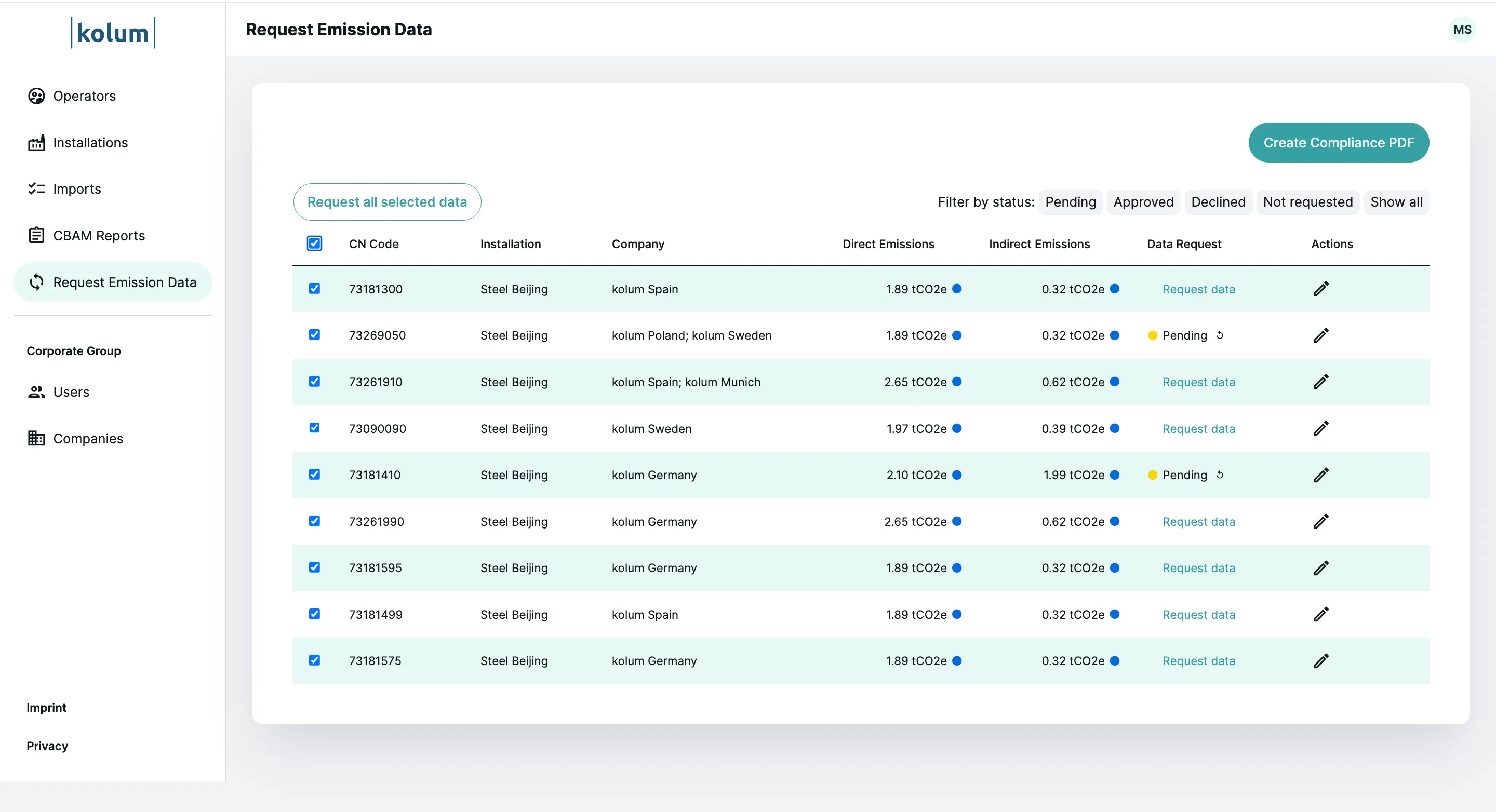
Filter Requests by Status
You can filter the table by status to display only the requests that have not yet been answered, for example. To do this, click on the respective status above the table on the top right, and the table will be filtered accordingly. A request can have one of four status messages:
| Status | Explanation |
|---|---|
| Pending | The request has been sent, but no data has been received yet. |
| Approved | The operator has sent back emissions data, and you have accepted the data and recorded it for the respective goods. |
| Declined | The operator has sent back emissions data, but you have rejected the data (e.g., because it was not plausible). |
| Not Requested | You have not yet requested emissions data from the operator. |
Request Emissions Data Again
If no emissions data has been returned by the operator after a while, you can send another request. To do this, simply click the “Repeat” icon next to the status message in the respective row of the table.
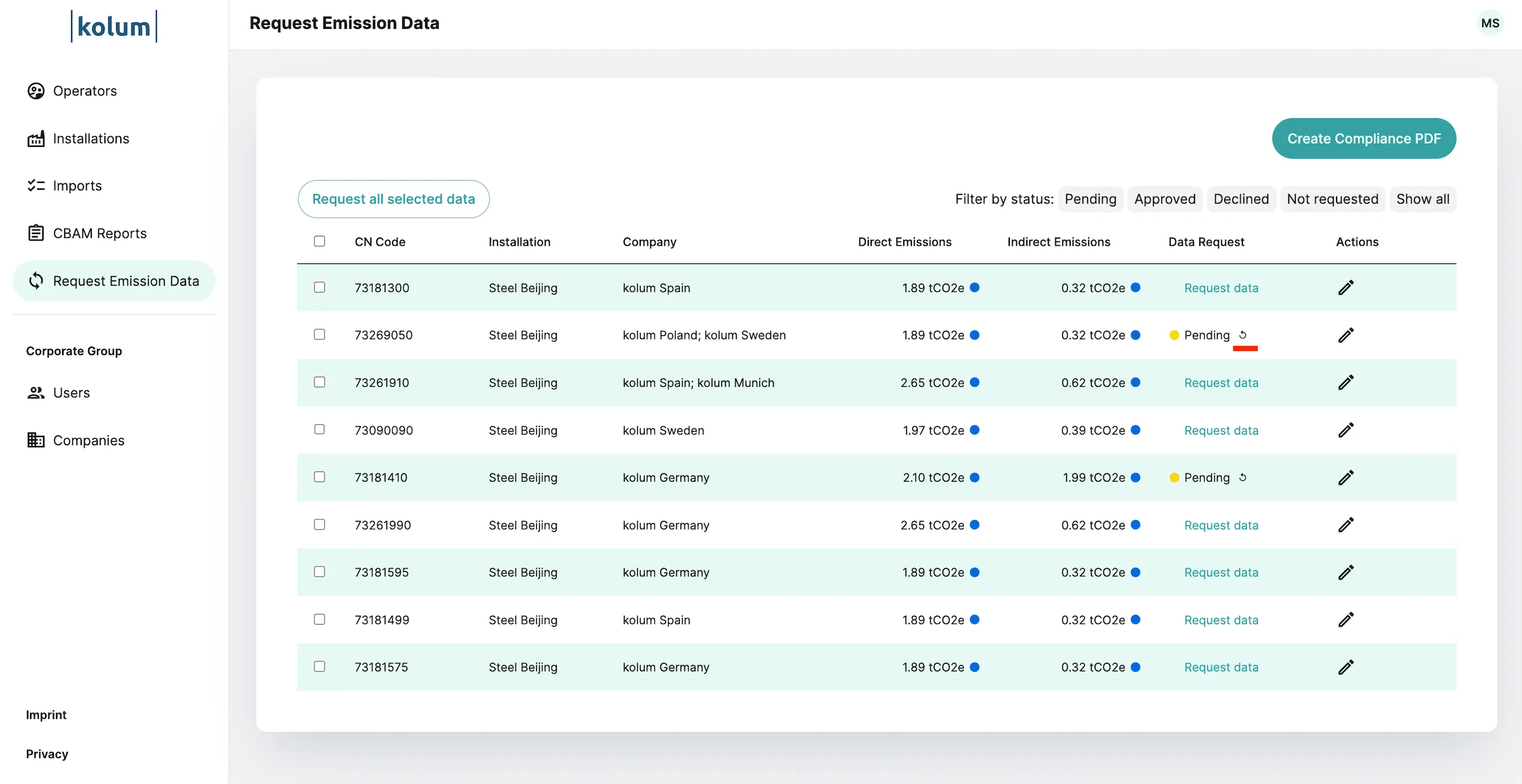
Receive Emissions Data
When your operator has shared emissions data with you, the status of the request will change to “Approved, View Request.”
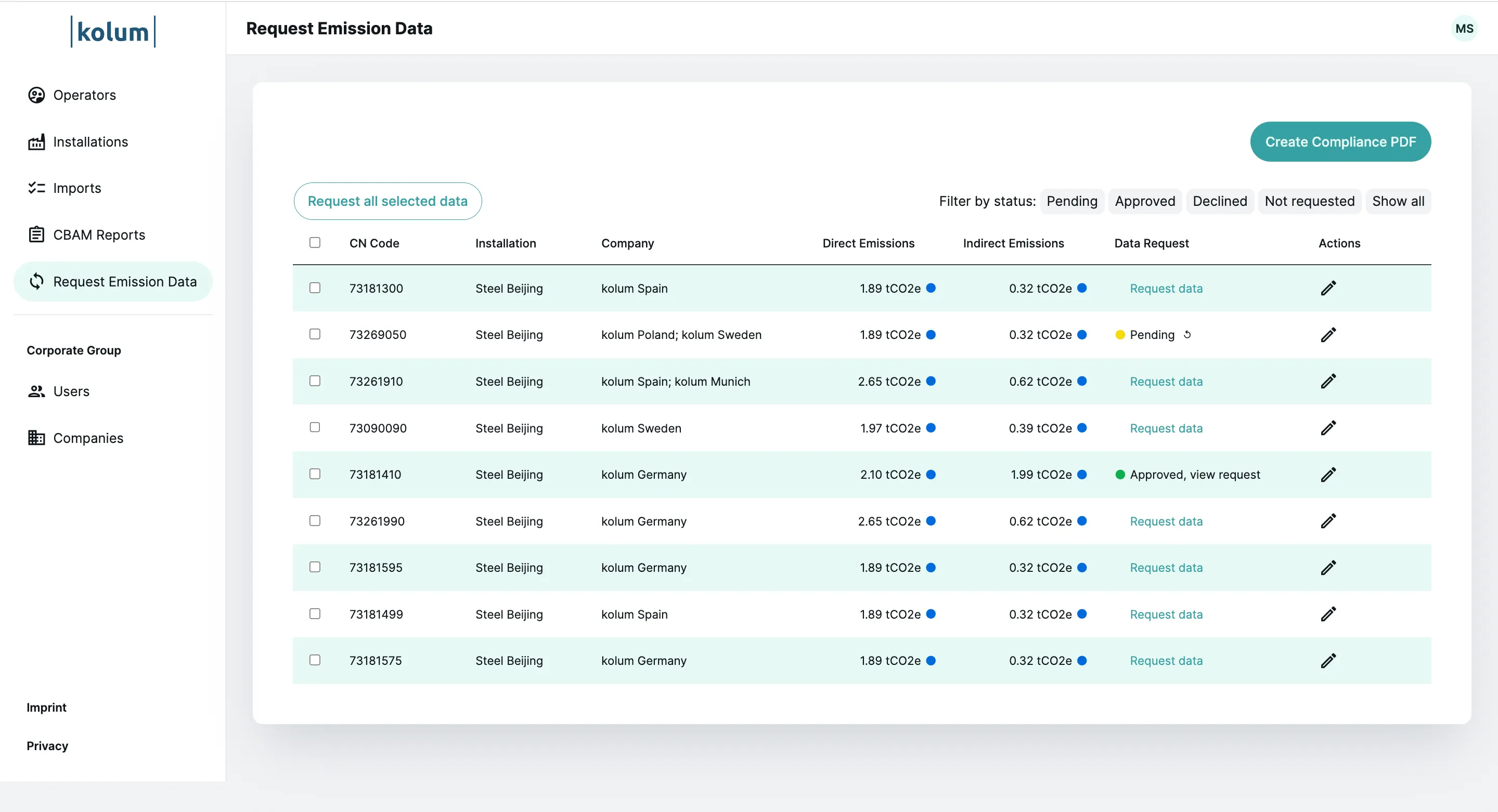
You can now click on the status to review the returned data for plausibility. In the window that opens, you can compare the returned data with the standard emissions values recorded for the goods. If the returned data deviates by more than 20% from the standard value, the software will issue a warning.
If the data seems plausible and you want to record it for the imported goods, confirm the returned data, and the emissions values will be adopted, and the status will change accordingly to Approved.
